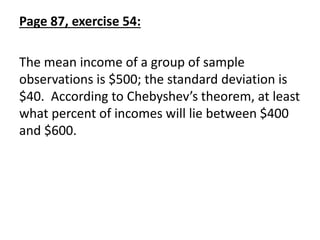This document provides an overview and objectives for Chapter 3 of the textbook "Statistical Techniques in Business and Economics" by Lind. The chapter covers describing data through numerical measures of central tendency (mean, median, mode) and dispersion (range, variance, standard deviation). It includes examples of computing various measures like the weighted mean, median, mode, and interpreting their relationships. The document also lists learning activities for students such as reading the chapter, watching video lectures, completing practice problems in the book, and participating in an online discussion forum.























































